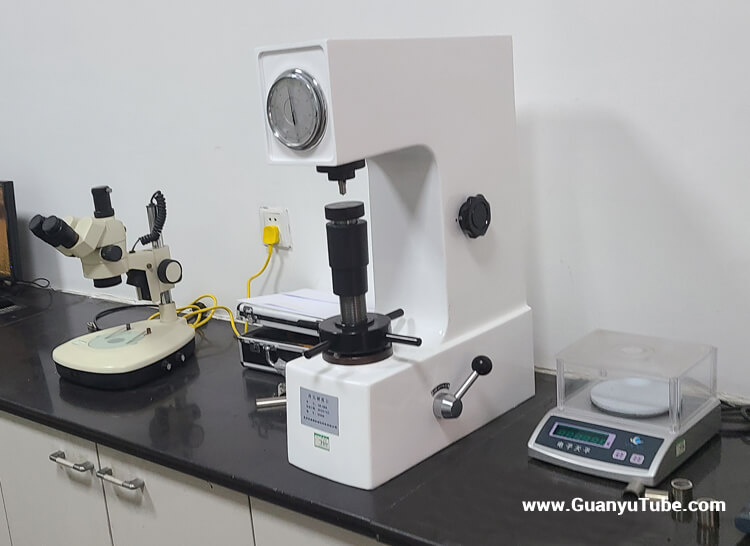Difference Between HRB and HRC According to ASTM E18
HRB and HRC are both Rockwell hardness scales defined in ASTM E18, but they differ in indenter type, applied load, and material suitability.
1. Indenter and Load:
- HRB uses a 1.588 mm (1/16 inch) diameter steel ball indenter with a 100 kgf major load.
- HRC uses a 120° diamond cone (Brale) indenter with a 150 kgf major load.
2. Applicable Materials:
- HRB is designed for softer metals, such as annealed low-carbon steel, copper alloys, aluminum, and other non-ferrous materials. Its effective hardness range is 60–100 HRB.
- HRC is used for hardened steels and heat-treated alloys, including tool steels, quenched components, and high-strength metals. Its typical range is 20–70 HRC.
3. Limitations:
- If a material exceeds 100 HRB, it should be tested using HRC instead.
- If a material is too soft (below 20 HRC), HRB or another scale (e.g., HRA) should be used.
4. Key Consideration:
HRB and HRC results cannot be directly converted—ASTM hardness conversion tables must be used for approximate comparisons. Proper scale selection is critical to ensure accurate Rockwell hardness measurements per ASTM E18 standards.
Key Differences Between HRB and HRC (Per ASTM E18)
| Feature | HRB | HRC |
|---|---|---|
| Indenter | 1.588 mm (1/16″) steel ball | 120° diamond cone (Brale) |
| Major Load | 100 kgf | 150 kgf |
| Scale Range | 60–100 HRB (softer materials) | 20–70 HRC (harder materials) |
| Typical Use | Annealed low-carbon steel, copper, aluminum, soft metals | Hardened steel, tool steel, heat-treated alloys |
| Overlap/Notes | Not suitable for materials >100 HRB (switch to HRC) | Not suitable for materials <20 HRC (too soft; use HRB) |
Additional Notes (ASTM E18 Compliance)
- HRB is for low to medium hardness (e.g., non-ferrous metals).
- HRC is for high hardness (e.g., quenched/tempered steels).
- Scales are not directly convertible—use ASTM hardness conversion tables if needed.
- Always verify material hardness range before selecting the scale to avoid measurement errors.
For ASTM E18-compliant testing, ensure proper indenter selection, load application, and calibration.

